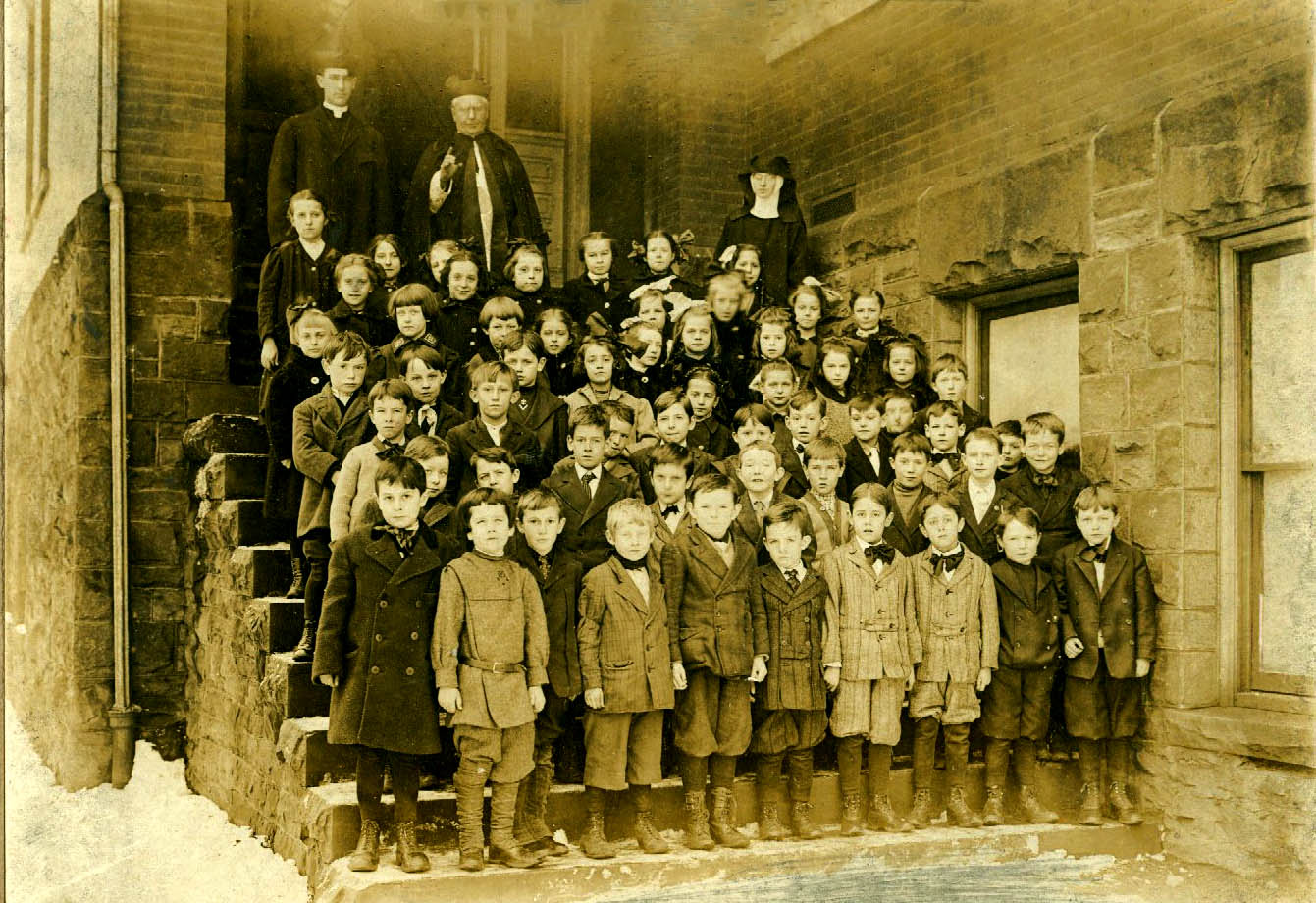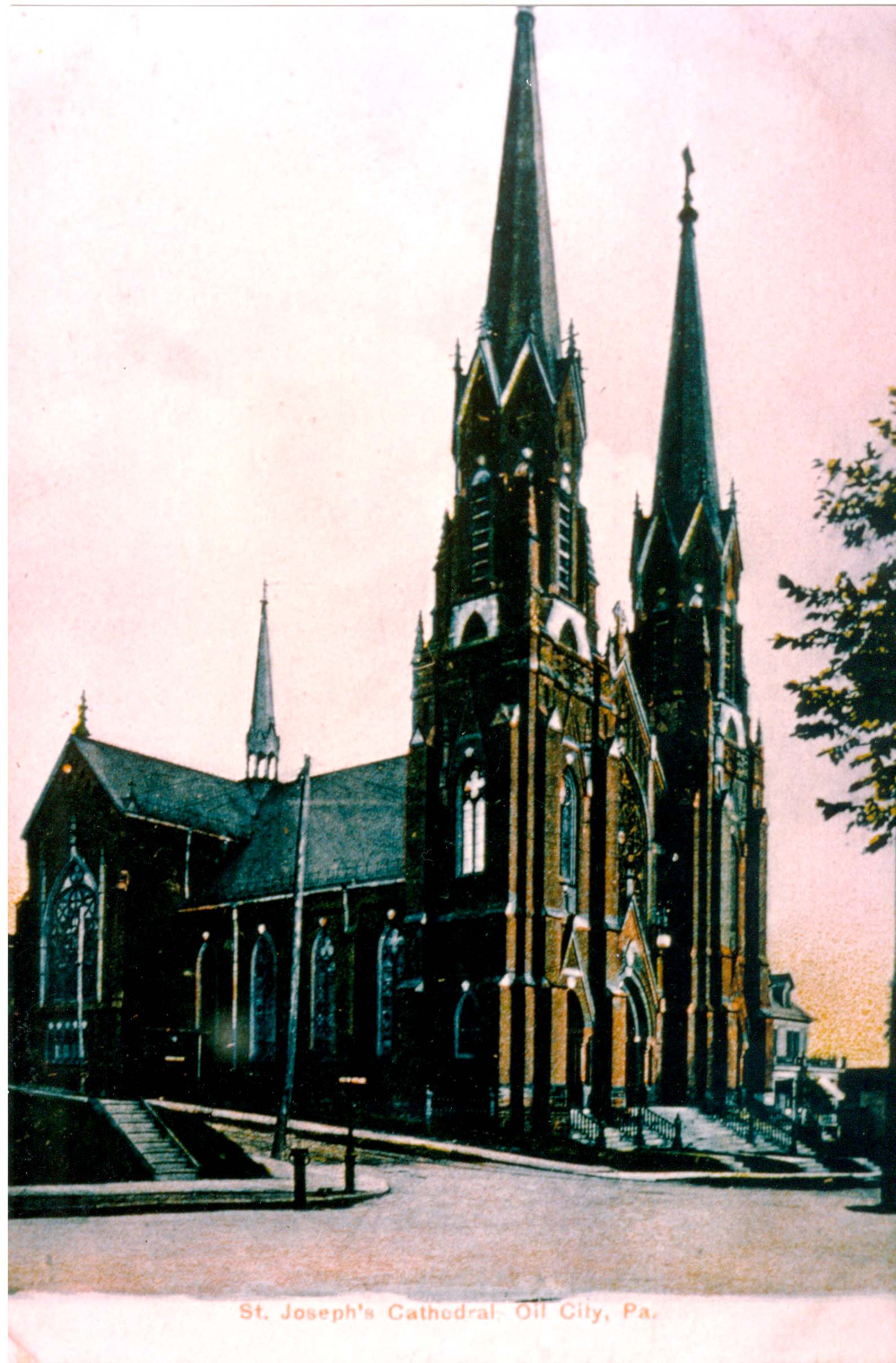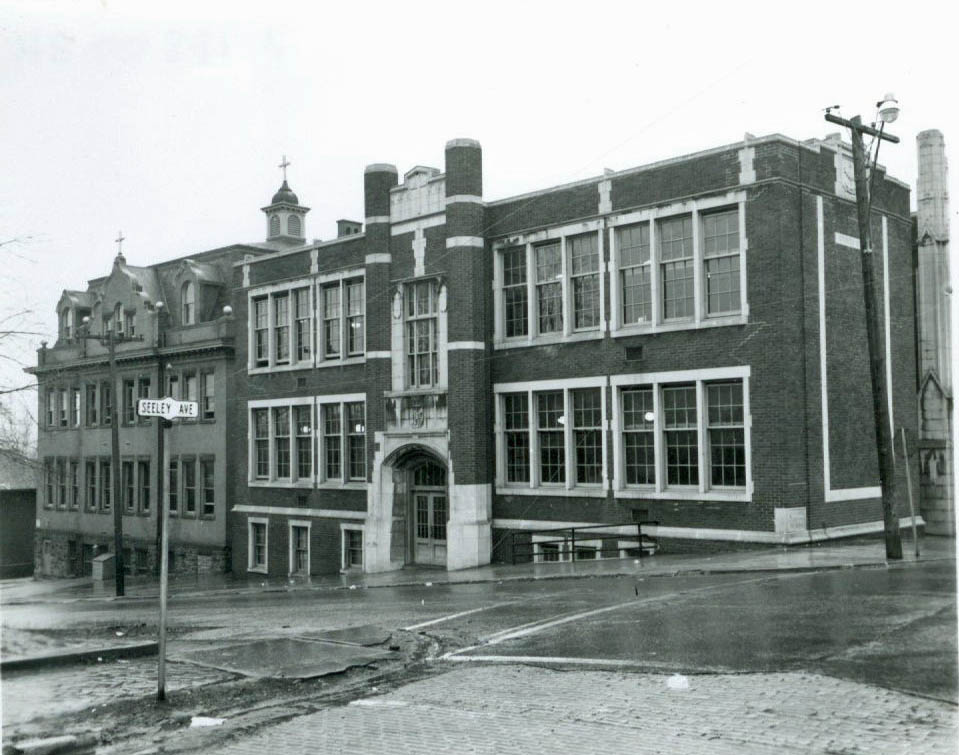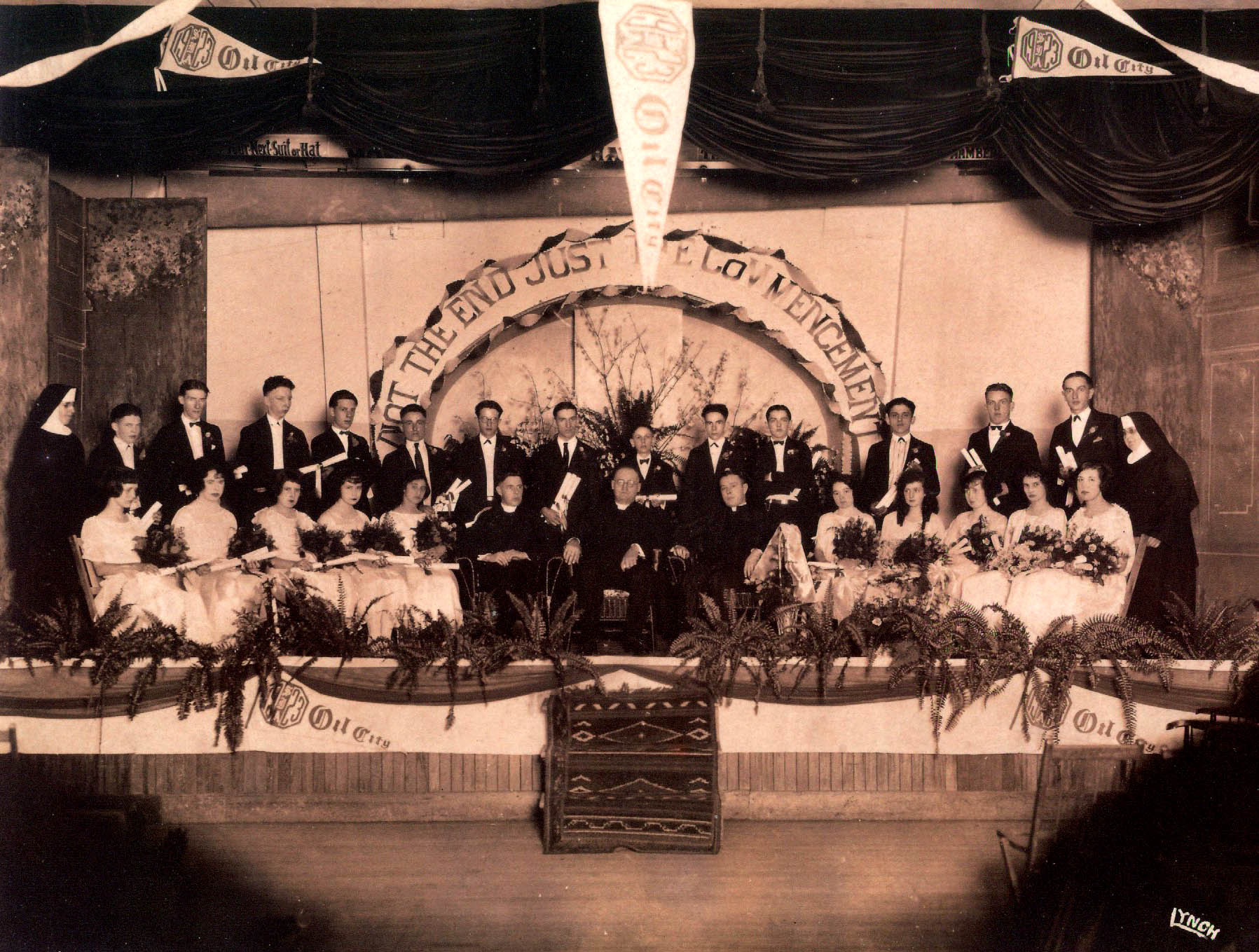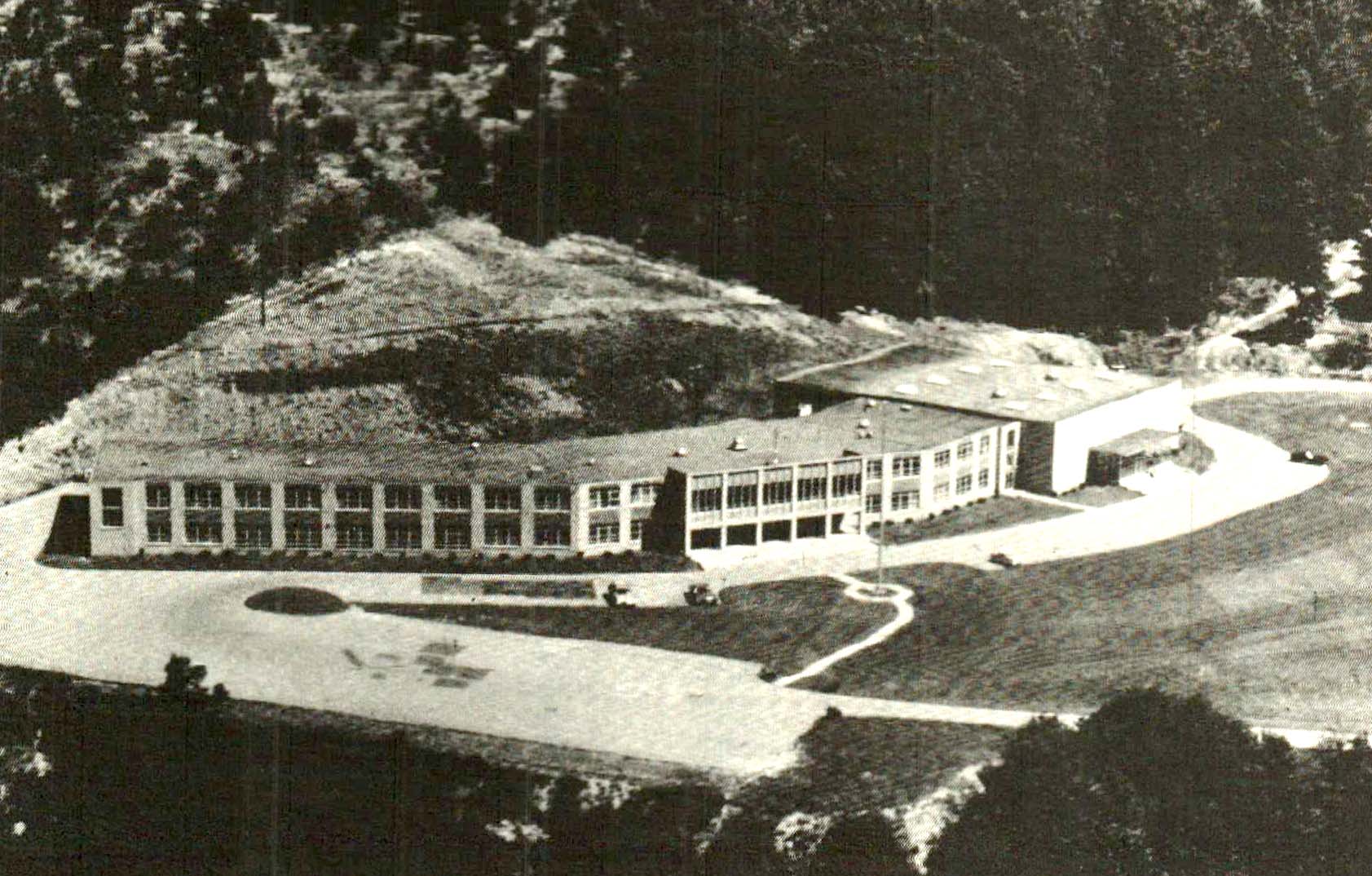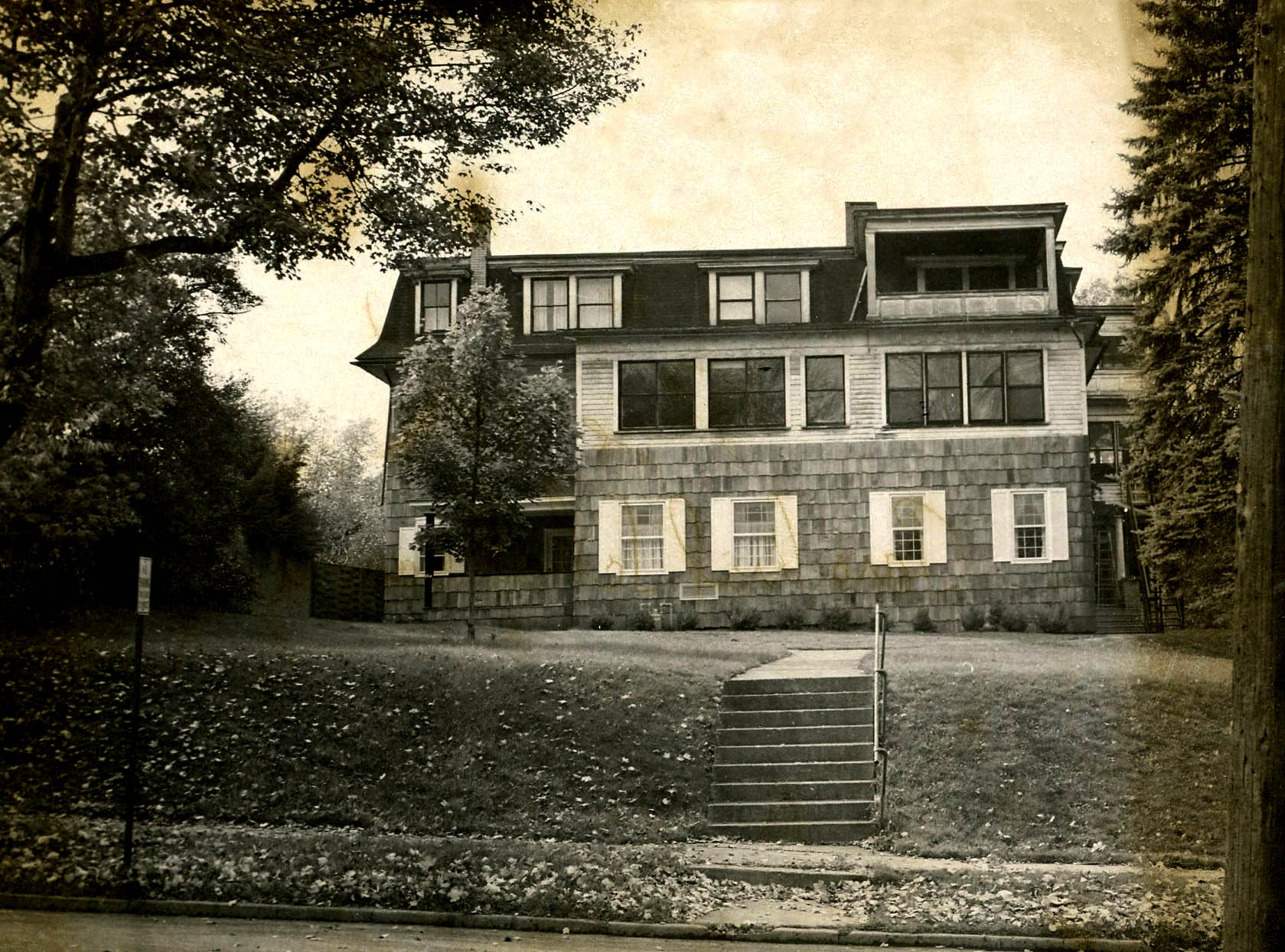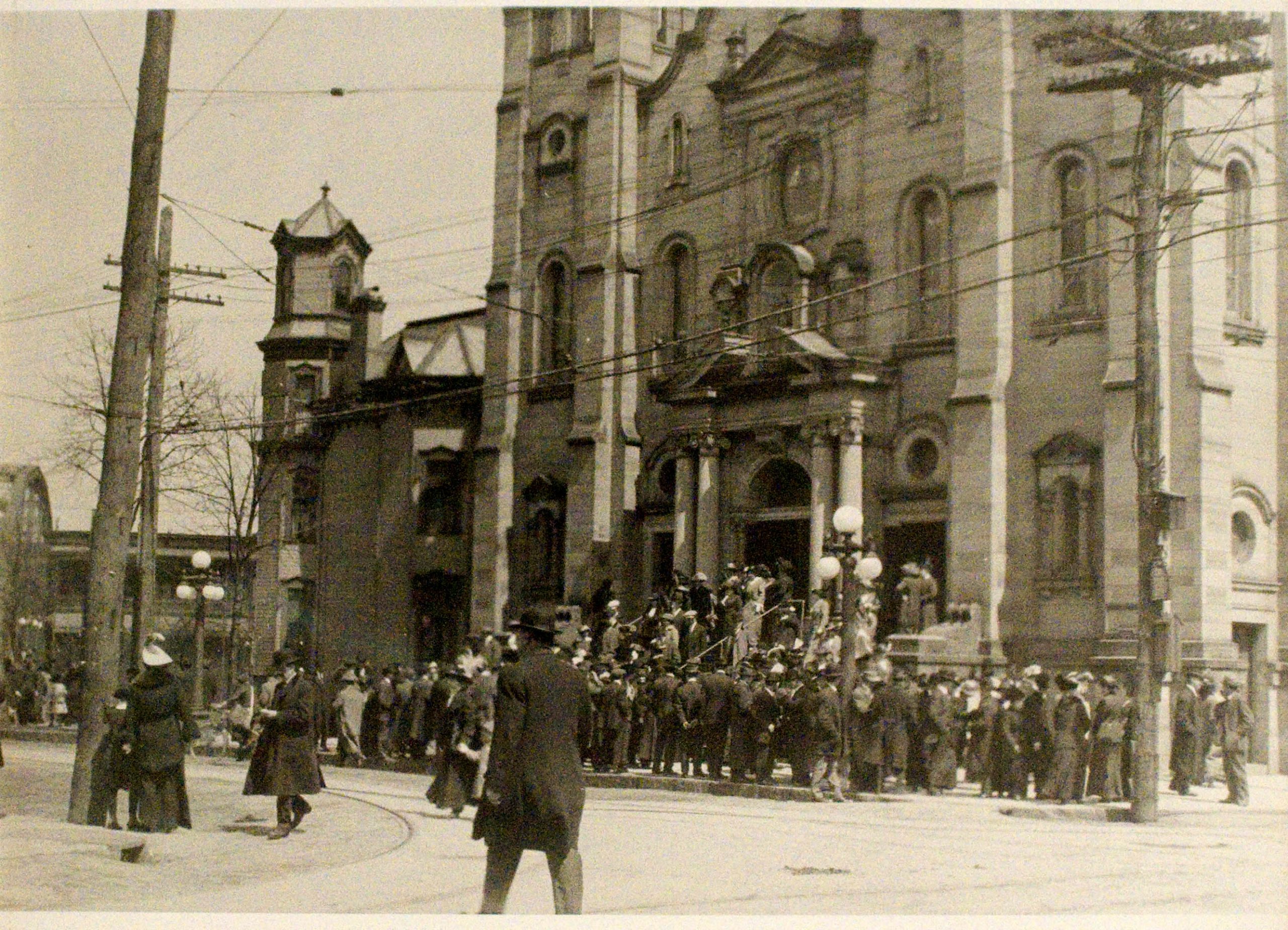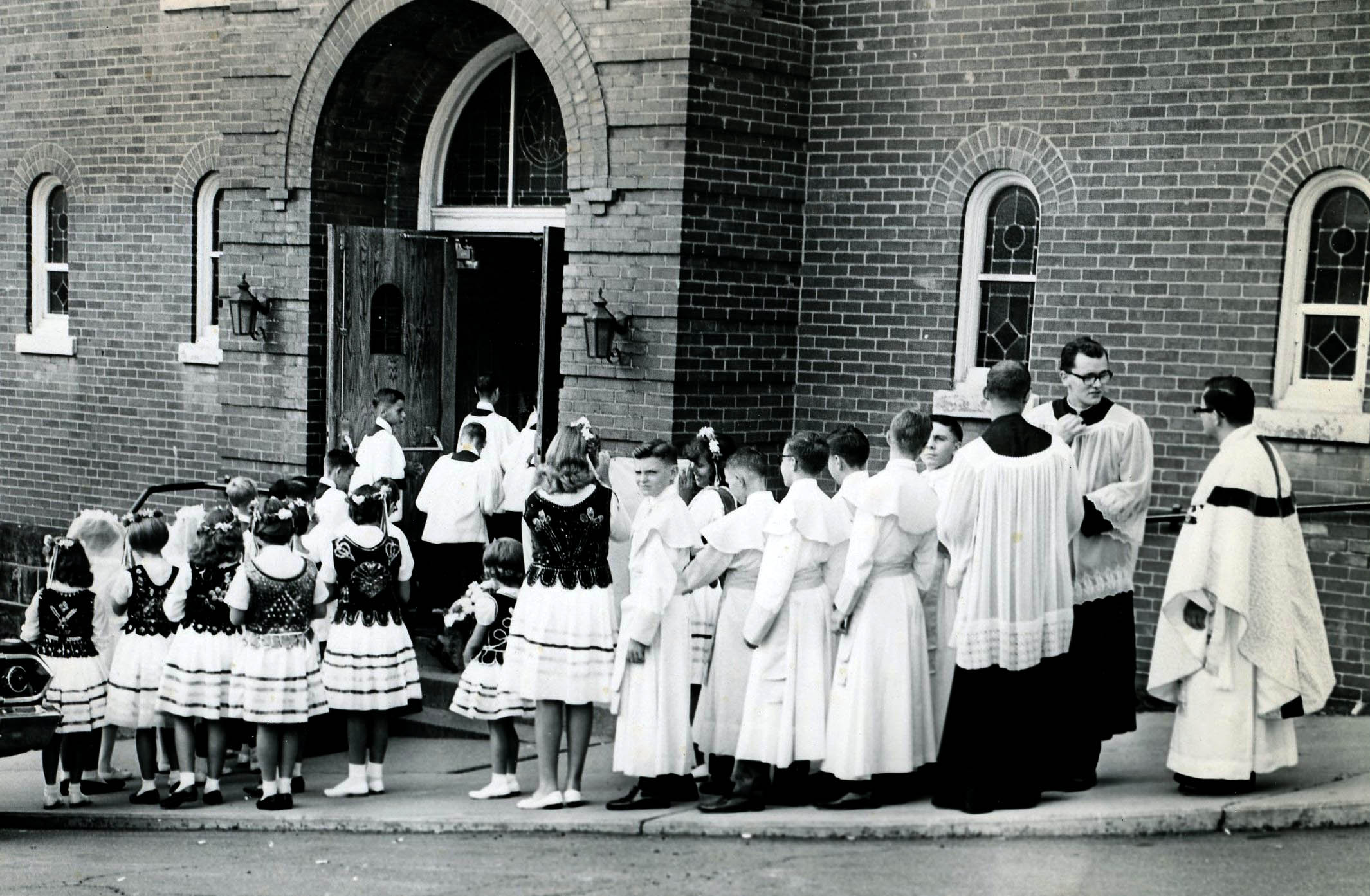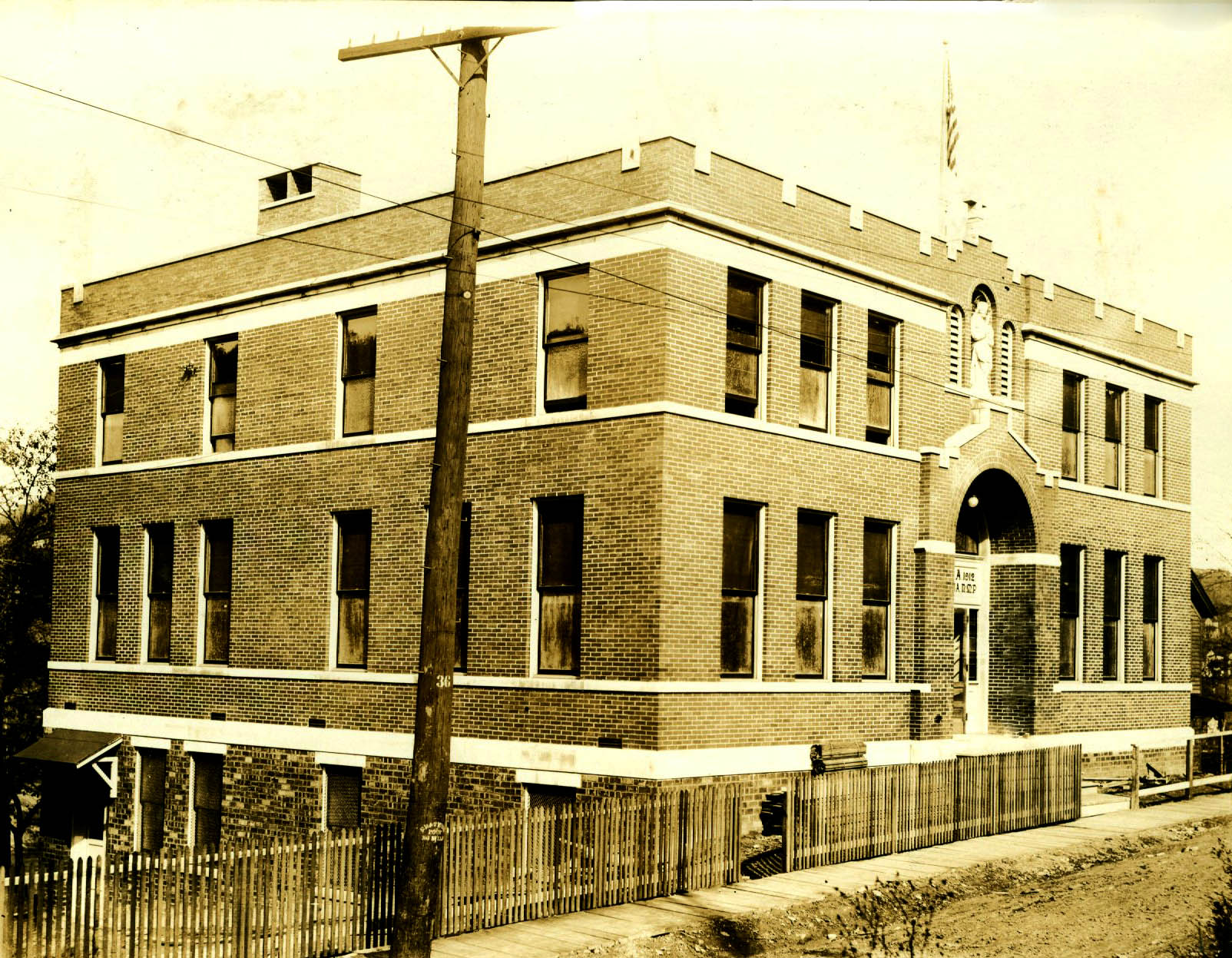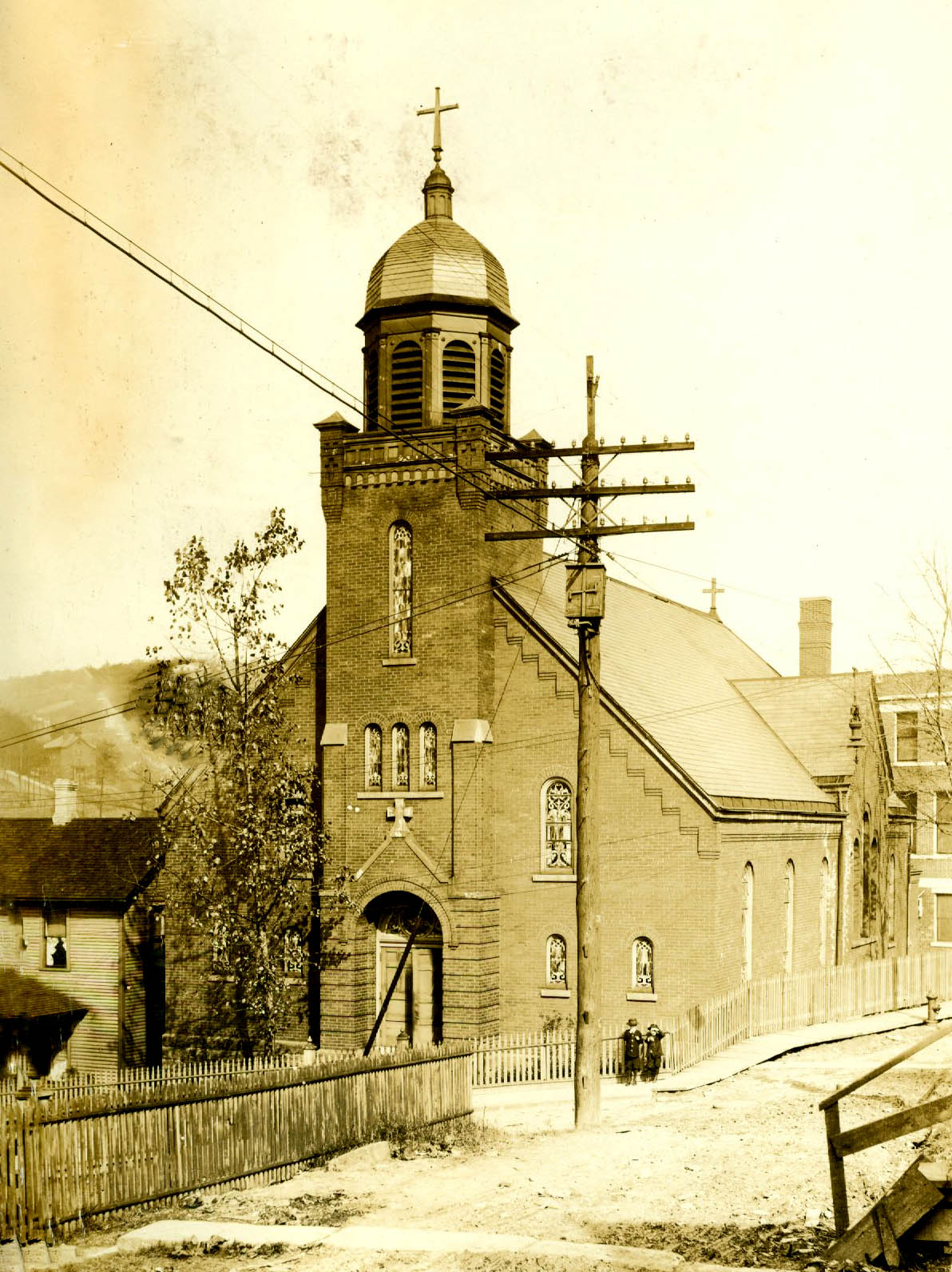Parochial Schools
- Judy Etzel
- June 24, 2022
- Hidden Heritage
- 6363
Catholic education has a long history in Oil City as a result of efforts undertaken by hundreds of parishioners from five Catholic churches.
Enrollment in Catholic schools within the city hit its zenith in 1959 when nearly one-fourth of the school age population within the Oil City School District was enrolled in the parochial schools.
St. Joseph
The very first Catholic school was organized two years before the City of Oil City was incorporated in 1871 through the consolidation of neighborhoods on the North Side and South Side.
In 1869, members of the St. Joseph Church bought a small house on nearby Washington Avenue to provide Catholic education to youngsters. Soon after, the parish built a small wooden school near that site. It housed four rooms to accommodate students in all grades.
In 1906, the school was formally designated as St. Joseph Academy.
As enrollment grew, a decision was made to build a new Catholic high school. The former convent at the corner of Washington and Seely was torn down in 1929 and a grand effort was launched to raise money for a new school.
Unfortunately, the timing coincided with the stock market crash and the Great Depression. The funding effort faltered until former St. Joseph parishioner, Henry McSweeney, who then lived in Atlantic City, N.J., offered his help.
He sent a $65,000 check to the parish and soon followed up with another $35,000 donation. It would more than cover the construction costs of $83,232.
The new three-story St. Joseph High School featured a Gothic design, chosen deliberately to harmonize with the adjacent St. Joseph Church. The building was formally dedicated in the fall of 1930. It was called the McSweeney Memorial High School and was dedicated to the generous benefactor’s late parents. The initial enrollment at the elementary school and the new high school was about 500 students.
The Benefactor
Henry McSweeney, grand benefactor for the St. Joseph High School, was born in 1856 in Pittsburgh. He journeyed north to Oil City with his parents, John and Elizabeth McSweeney, on April 15, 1865, making the trip up the Allegheny River by steamboat.
His vocations ranged from school teacher to lawyer to oilman. After attending school in Oil City, he began working as a teacher. He then studied law with the firm of McNair and Hancock and joined the law office of J.B. Agnew of Tionesta.
In 1884, he was hired as solicitor for the pipeline companies in Oil City. When the United Pipe Line Co. and the National Transit Co. consolidated, McSweeney did most of the legal work. He was active in the dissolution of the Standard Oil Co. monopoly in 1912-13 and was responsible for securing charters in various states for the Standard’s branches. He later went to work for Standard Oil of New Jersey and also served as a partner of Laidlaw & Co., a New York brokerage firm.
McSweeney was a partner in the Snowden & McSweeney firm in Oil City. The company was regarded as one of the most successful in the history of the early oil industry.
In June 1923, his parents donated their West First Street home to the Belles Lettres Club. A few years later, they gave a $75,000 endowment to the women’s club. An auditorium was then added to the clubhouse.
Perhaps the family’s most outstanding gift, given by the young McSweeney, was the $100,000 donated for the construction of what would become St. Joseph High School in Oil City. The gift was dedicated to his late parents. In their honor, the school was initially named the McSweeney Memorial High School.
McSweeney was quoted in his obituary as noting he regarded “Oil City as a city of culture and refinement.”
In that light, he marked the dedication of the new high school by writing: “I hope the new high school building may prove of great benefit not only to St. Joseph Parish but to the community at large, and that from it may go forth annually a class of well-educated boys and girls who will be a credit to the religion, morality and good citizenship as well as to the memory of my dear parents, in whose honor the building has been erected.”
McSweeney was also Interested in sports of all kinds and he contributed a large sum of money for the completion of the public tennis courts on Hasson Heights. A fan of tennis, he built and maintained a tennis court, in partnership with Henry Roess, on Seneca Street. The site would later be the location of the Drake Theater.
The late Bill Bowen of Oil City gave a program on the Belle Lettres Club and the McSweeney legacy several years ago for the Oil City Heritage Society. He said the family’s high social position was reflected in a New York Times article on the observance of Henry’s 86th birthday in 1941 at The Breakers in Palm Beach.
Bowen said the guest list included top Standard Oil officials, socialites and many members of the Kennedy clan.
There was also a spectacular robbery that involved Theresa, Henry’s widow, in 1961. The theft of $100,000 in jewelry and some $3.5 million worth of registered stocks and bonds from her home drew national headlines. The jewelry and other household items were never recovered but the stocks turned up in Switzerland.
Theresa McSweeney died at age 86 in 1968 and left an estimated estate of about $80 million that went to her nephews.
Venango Christian
The aging St. Joseph school building along with a growing enrollment prompted another change in the late 1950s. The city’s parishes again rallied, this time joined with Catholic churches in Franklin and Titusville, to raise money for a new high school. Key contributors in Venango County were the St. Joseph, St. Stephen, St. Patrick, Assumption, St. Venantius, and Help of Christians parishes.
In September 1962, the new Venango Christian High School opened off West First Street in the city’s West End. Enrollment at the $825,000 high school was pegged at 442 students in grades nine through twelve. It served students from Venango, Clarion, Forest and Crawford counties.
The original plans for the 10-acre site called for a football field, cinder track and tennis courts. Those projects were not undertaken.
The school’s name was changed to Venango Catholic High School in 1995.
The school received a rich distinction in 1980 when the girl’s basketball team won the Class A state championship. It was the first basketball team in Venango County to ever win a state title.
Across town, the St. Joseph High School building was converted into an elementary school. It closed in the spring of 1983 with students transferred to St. Stephen School across the river. The old building was demolished and converted into a parking lot.
St. Stephen
The St. Stephen Elementary School opened in September 1945 in the former Weaver apartment building at 204 Reed St. The school project was prompted by the desire of 600-plus families in the St. Stephen Church parish to have a Catholic elementary school. Initially, there were two grades – first and second – and 36 students were enrolled.
An additional grade was added each year until the 1951-52 term in which all eight grades were in place. The top third floor offered housing for the Benedictine nuns who were the teachers. The level eventually was converted to classrooms.
In 1953, the church purchased property at the corner of Reed and West Third streets to build a new school. The $420,000 building was dedicated in October 1955. It could accommodate 600 students.
At one point, the school had students in grades first through ninth because of crowded conditions at St. Joseph High School. That changed with the new Venango Christian High School and the grade levels changed to first through seventh.
In 1970, the enrollment at St. Stephen School jumped as it absorbed elementary students who had been attending Assumption Elementary School which had closed. That happened again in 1981 when the St. Joseph Elementary School closed, leaving St. Stephen School as the only Catholic elementary School in the city.
In 1994, the Erie Catholic Diocese opted to allow teachers within its schools to be lay teachers. What had previously been taught by all nuns was stopped.
Assumption
The Assumption Blessed Virgin Mary grade school was located at 210 Emerald St.
Early on, classes were held in the basement of the Assumption Church from 1899 until a new school was built in 1912. Enrollment was pegged at about 400 students who were taught by the Felician Sisters.
The 1912 dedication of the new school featured a special ceremony. The building was consecrated by Rev. Paul Rhoades, auxiliary bishop of the Chicago Catholic Diocese and the first Polish bishop to be consecrated in the U.S. It was fitting because the Assumption School was in the midst of a neighborhood that boasted a strong Polish heritage.
The school focused on teaching the Polish language and Polish history in recognition of its roots.
However, in the late 1940s, those requirements were dropped due to complaints that the curriculum was “too heavy a workload for youngsters” because second and third-generation Polish/Americans no longer spoke Polish in their homes.
In 1970, Assumption School closed and the 78 students enrolled there were transferred to St. Stephen School across town. The building now houses the St. Elizabeth Center.
Written by Judy Etzel with research by Kay Dawson and design by Natalie Cubbon.
HIDDEN HERITAGE IS SPONSORED BY:
Oil Region Alliance
Gates & Burns Realty
Support This Project
Donations to the library are appreciated to help offset printing costs & make this project possible! Want to become a sponsor? Email us at promotions@oilregionlibraries.org to get started!
Make a Donation
